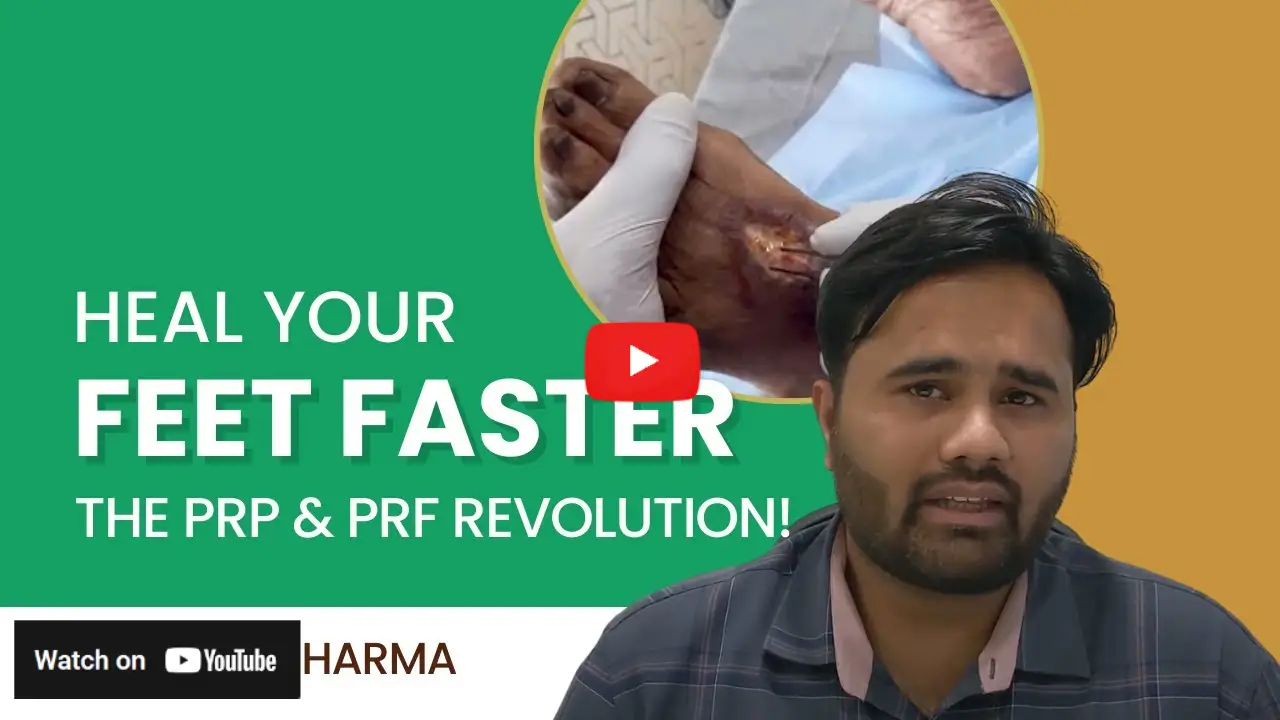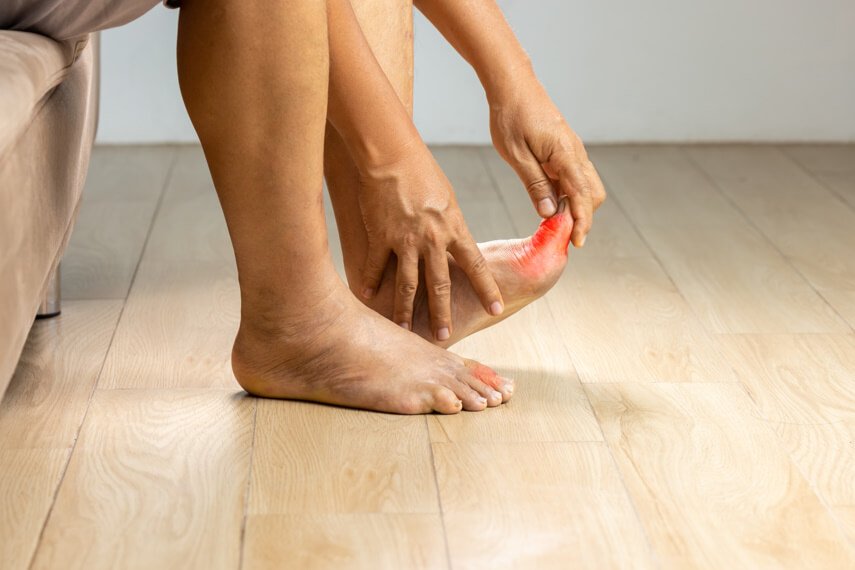Top 10 Reasons Wounds Don’t Heal And How to Treat Them
Wounds are a part of life—cuts, scrapes, and even surgical incisions are usually expected to heal naturally over time. But what happens when a wound lingers for weeks or even months without significant improvement? This is a red flag that shouldn't be ignored. Whether it’s a wound on the leg not healing or a foot wound not healing, chronic wounds can result in serious complications, especially for individuals with underlying conditions like diabetes or vascular disease.
Recognizing the causes of non-healing ulcers early is critical. These wounds don’t just stay the same—they often worsen and may lead to infections or even amputation if left untreated. This blog explores the common signs, reasons, and treatment options for wounds that won’t heal, while also highlighting the importance of professional care at a diabetic foot care & wound care clinic.
Common Signs Your Wound Isn’t Healing Properly
It’s not always obvious when a wound is failing to heal. Here are key signs to look out for:
- Persistent redness, swelling, or discharge: These may indicate infection or ongoing inflammation.
- Pain that doesn’t improve: While some pain is normal initially, prolonged or increasing pain is a warning sign.
- No change in size or depth over time: Healthy wounds gradually shrink. If yours stays the same or worsens, healing is likely stalled.
- Especially common in leg or foot wounds: A wound on the leg not healing or a foot wound not healing is often linked to poor blood flow or diabetes.
Top 10 Causes of Non-Healing Wounds
Understanding why your wound isn’t healing can point the way to effective treatment. Here are the most common culprits:
- Poor Circulation: Reduced blood flow limits oxygen and nutrient delivery to the wound.
- Infection: Bacterial growth can disrupt healing and spread to surrounding tissue.
- Diabetes: High blood sugar impairs immune response and damages blood vessels.
- Pressure or Repetitive Trauma: Constant friction or pressure (e.g., from shoes) delays recovery.
- Edema (Swelling): Excess fluid can block oxygen from reaching cells and slow healing.
- Smoking: Tobacco restricts blood vessels and reduces oxygen supply.
- Poor Nutrition: Healing requires adequate protein, vitamins, and minerals.
- Obesity: Excess weight puts pressure on wound sites and increases inflammation.
- Medications: Some drugs, like steroids or chemotherapy, suppress the immune system
- Underlying Health Conditions: Conditions like kidney disease or autoimmune disorders can interfere with recovery.
Factors That Affect Wound Healing
Several factors of wound healing play a crucial role in whether a wound resolves or lingers. These include:
- Age: Older adults often experience slower healing due to reduced skin elasticity and blood flow.
- Hydration and Moisture Balance: Both excessive dryness and too much moisture can impede healing.
- Immune Function: A weakened immune system slows response to infections and delays tissue repair.
- Wound Type and Location: Wounds on extremities (like feet or legs) often heal slower due to lower circulation.
- Compliance with Care: Regular wound cleaning and dressing changes are vital.
Best Treatment Options for Chronic Wounds
When standard dressings and ointments aren’t enough, more advanced care may be necessary:
- Wound Debridement Surgery: This removes dead or infected tissue, creating a clean base for healing.
- Negative Pressure Wound Therapy (NPWT): Suction devices help close wounds and promote tissue growth.
- Hyperbaric Oxygen Therapy: Oxygen-rich environments accelerate healing in chronic wounds.
- Topical Growth Factors and Bioengineered Skin Grafts: These treatments stimulate cell regeneration.
- Customised Wound Dressings: Modern dressings manage moisture and promote healing better than traditional gauze.
Specialised Care Matters
Not all wounds require a trip to a specialist—but chronic, non-healing wounds do. A diabetic foot care & wound care clinic offers tailored care, addressing both the surface wound and the underlying issues. These centres bring together multiple specialities—podiatrists, vascular surgeons, and endocrinologists—to offer holistic treatment plans.
Such clinics also emphasize preventive strategies, especially for diabetics at high risk for ulcers and infections.
Preventing Chronic Wounds
Prevention is the best cure. You can lower your risk of chronic wounds by:
- Managing diabetes carefully: Keep blood sugar levels under control.
- Inspecting feet and legs daily: Look for early signs of blisters, ulcers, or pressure sores.
- Wearing appropriate footwear: Reduce friction and pressure on vulnerable areas.
- Staying active: Boost circulation to the limbs.
- Quitting smoking: Improve oxygen delivery to tissues.
- Maintaining a healthy diet: Include protein, vitamin C, zinc, and iron to support healing.
Conclusion
A wound not healing isn’t just a nuisance—it can be a sign of deeper health problems. From causes of non-healing ulcers like diabetes or infection to more complex issues like poor circulation or immune dysfunction, the reasons can be numerous. But the good news is, that with timely intervention, proper care, and sometimes wound debridement surgery, healing is possible.
If you or your loved one is dealing with a foot wound, not healing or a wound on the leg not healing, don’t wait. Seek help from a diabetic foot care & wound care clinic for a professional assessment and personalized treatment plan. Chronic wounds don’t fix themselves—but the right care can make all the difference.
FAQs
How to treat a wound that won’t heal?
If a wound isn’t healing after several weeks, it’s important to keep it clean, covered, and protected from further trauma. Avoid home remedies and consult a doctor or wound care specialist. Medical treatment may include specialized dressings, antibiotics, or procedures like debridement. Managing any underlying health issues, like diabetes or poor circulation, is also essential for proper healing.
What is the cause of the wound not healing?
Wounds may fail to heal due to infections, poor blood circulation, diabetes, repeated trauma, or inadequate nutrition. Conditions like smoking or taking certain medications (like steroids) can also delay healing. Identifying and addressing the underlying cause is crucial for effective treatment.
How does diabetes affect wound healing?
Diabetes affects wound healing by reducing blood flow, damaging nerves, and weakening the immune system. High blood sugar levels make it harder for the body to fight infection and repair tissue, leading to slower healing and a higher risk of complications.
What happens if a diabetes ulcer doesn’t heal?
If a diabetic ulcer doesn’t heal, it can become infected and may lead to serious complications such as tissue death, gangrene, or even amputation. Chronic ulcers can also cause long-term pain, reduced mobility, and repeated hospital visits if not treated early.
How to improve wound healing in diabetes?
To improve healing, it’s important to keep blood sugar levels under control, follow proper wound care instructions, and regularly check for any new injuries. Eating a nutritious diet, staying hydrated, avoiding smoking, and wearing protective footwear can also support faster and safer healing.





.jpg)

